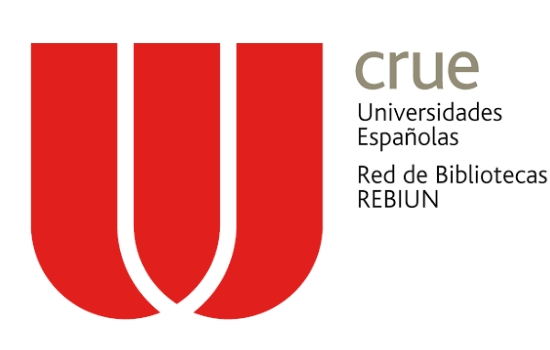Nepohualtzitzin: un modelo matemático de cualidad
Keywords:
Nepohualtzitzin, Anáhuac, Metáfora indígena, Danza, Indigenous metaphor, DanceAbstract
Resumen
En Mesoamérica, el pueblo náhuatl crea un modelo matemático figurativo de cualidad, donde pretende identificar y abstraer los elementos esenciales de un sistema que concentra la analogía funcional del pensamiento que guía a los pueblos de nuestro continente: una bandera, una pluma y una bolsa, figuras simbólicas utilizadas por todos los pueblos indios del continente para representar sus valores.Consideramos que tales valores también se sintetizan en la palabra náhuatl: Nepohualtzitzin (Ne: la persona. Pohualli: cuenta. Tzitzin: trascender), el cual es un instrumento de cálculo. La idea sustancial es: La persona que tiene el conocimiento de la cuenta de la simplicidad de la armonía para trascender al origen de la creación.
Hemos tenido varias experiencias educativas en diversos países, en los cuales utilizamos el Nepohualtzitzincomo recurso didáctico que hace posible el desarrollo de habilidades integrales con un potencial fuerte para incorporar la metáfora indígena y algunas reflexiones históricas. Seguimos usando el Nepohualtzitzin como un instrumento de cálculo del sistema vigesimal (adaptándolo también al sistema decimal) porque nos da la conciencia y el conocimiento de las cuentas para trascender, propiciando el desarrollo y la destreza de pensamiento de nuestros hijos.
Abstract
In Mesoamérica, the nahuátl people create a figurative mathematical model of quality, which tries to identify and to abstract the essential elements of a system that concentrates the functional analogy of the thought that guides the people of our continent: a flag, a feather and a bag, which are symbolic figures used by all the Indian people of the continent to represent their values. We consider that such values also are synthesized in the náhuatl word: Nepohualtzitzin (Ne: the person. Pohualli: calculation. Tzitzin: to be transcendental), which is an instrument of calculation. The substantialidea is: The person who has the knowledge of the calculation of the simplicity of the harmony to be transcendental to the origin of the creation.
We have had several educative experiences in diverse countries, in which we used the Nepohualtzitzin like a didactical resource that makes possible the development of integral skills with a strong potential to incorporate the indigenous metaphor and some historical reflections. We continue using the Nepohualtzitzin like an instrument of calculation of the vigesimal system (adapting it also to the decimal system) because it gives us the conscience and the knowledge of the calculation to be transcendental, promoting the development and the skill of thought of our children.
Downloads
References
Carpanta Baron, L. (1986). Idioma azteca. Lecciones y ejercicios. México DF: Editorial Popular.
Caso, A. (1956). El calendario mixteco. México DF: Editorial.
Caso, A. (1967). Los calendarios prehispánicos. México DF: Editorial.
Esparza Hidalgo, D. (1976). Cómputo azteca. México DF: Editorial Diana.
Esparza Hidalgo, D. (1978). Nepohualtzitzin, computador prehispánico en vigencia. México DF: Editorial Diana.
Esparza Hidalgo, D. (1979). Cómputo azteca y la geometría. México DF: Editorial Esparza Hidago.
Lara González, E. (2004). Mi trascender a través de la cuenta y el juego. Metáfora espiritual matemática. México DF: El Angelito Editor.
Lara González, E., Sgreccia, N. (2008, Julio). Nepohualtzitzin, mucho más que un instrumento de cálculo. VII History and Pedagogy of Mathematics’ Meeting, Distrito Federal (México).
Lara González, E. (2009). Paso, camino y danzo con la cuenta de armonía. Teoría matemática del origen del Universo y el orden de la cuenta del maíz, en la danza del Anáhuac. México DF: El Angelito Editor.
Lara González, E., Flores Sandoval, A. (2009). Manual didáctico del Nepohualtzitzin para el desarrollo de competencias matemáticas. México DF: Secretaría de Educación Pública.
Lara González, E., Sgreccia, N. (2010). The harmony in Mesoamérican mathematics.Mathematics Today. Number of February, 49-53.
López Austin, A. (2005). El modelo en la ciencia y la cultura. México DF: Siglo XXI y UNAM.
López Austin, A. (2008). Dioses del norte, dioses del sur. México DF: Era.
Portilla, M. (1979). La filosofía nahuatl. México DF: UNAM.
Sgreccia, N. (2008, Octubre). Nepohualtzitzin: el que cuenta para trascender. I Muestra Regional del Profesorado en Matemática, Armstrong (Argentina).
Downloads
Published
How to Cite
Issue
Section
License
Once the article is accepted by the Latin American Journal of Ethnomathematics, the authors cede the rights to publish and distribute the text electronically, including storing it and making it available online.
The authors can distribute their own material without soliciting permission from the Latin American Journal of Ethnomathematics, whenever mentioning that the original version is found at http://www.revista.etnomatematica.org
Copyright © 2008, Latin American Journal of Ethnomathematics
All contents of the Latin American Journal of Ethnomathematics are published under the _ and can be used freely, giving credits to the authors and to the Journal, as established by this license.











